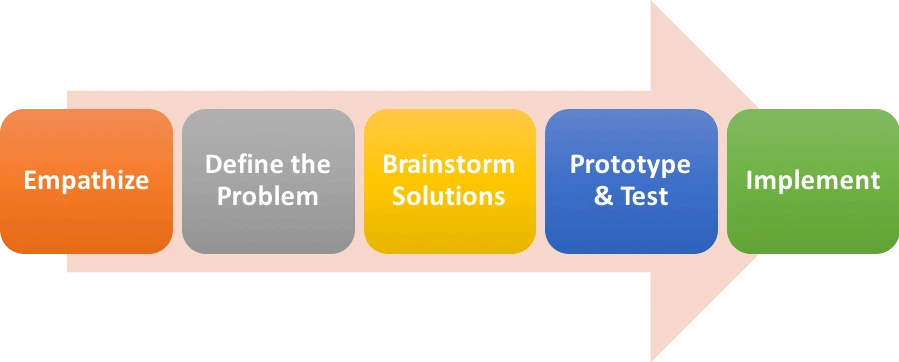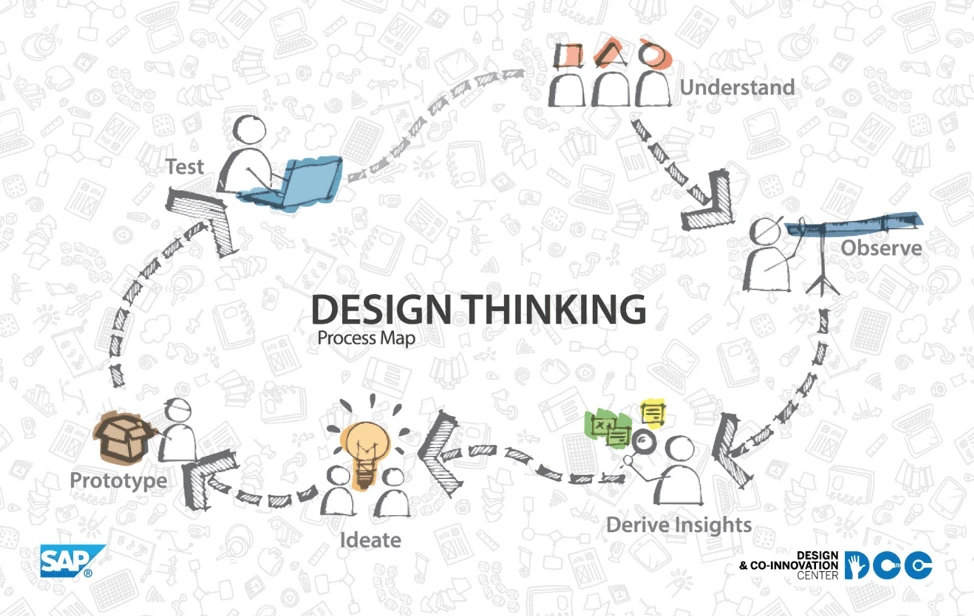Today’s marketers are living in a fascinating world. The landscape that encompasses our what, where, when, how and why sees drastic shifts from day to day. Since over 60% of marketers claim that generating quality traffic and leads is their top challenge, success means getting the right content in front of the right sets of eyes.
Related: 9 ways marketers & designers can collaborate better
Design thinking is a concept that’s been making waves in the marketing world. It refers to an iterative process that aims to intrinsically understand the user, challenge conventions, and redefine the very nature of certain problems to come up with alternative strategies and solutions. If your team is searching for innovative ideas, here are 3 ways to create a marketing culture around design thinking.
1. Build your team to match your vision
Marketing visions can vary quite a bit from brand to brand. Building a team that functions as a single unit can be a significant challenge, especially in a growing company. Marketing teams need to maintain a healthy dynamic where ideas and processes work together to achieve business goals.
Assembling a team with a unified vision all starts in the recruiting process. To create a culture around design thinking, you have to build a modern marketing team. This includes:
- Content creation – Writing blogs, creating videos, infographics, etc.
- Acquisition – Generating traffic, leads and front-end sales.
- Monetization – Turning leads into customers.
In order for these roles to work in harmony, all visions and values need to be aligned.
Fortunately, there are resources to make this task easier. As little as a decade ago, you could only learn so much about a new hire before bringing them onboard. Today, AI-driven tools like Harver automatically match applicant skillsets to job descriptions. You can even run a number of specialized tests for things like situational judgement, professional values, personality traits, and problem-solving capabilities.
Impactful design thinking is only possible when everyone is on the same page. Throughout the long process of building a marketing culture, this needs to be a priority.
2. Use data to think outside the box
Design thinking and “thinking outside the box” are practically synonymous. But, that phrase can mean a number of things. One of the first to come to mind is how controversial people can make bold, unorthodox statements and get nearly every major media outlet in the country into a state of uproar. While this approach can certainly get the masses talking, it’s probably not wise to bank on it.
For a marketing team to break the norm and boost engagement, they must first understand exactly what “the norm” is.
One of best ways to do this is by diving deep into the data they already have on their customers. They can mine this data for underlying insights in customer profiles, conversion patterns and inventory management. For example, an online retailer can use their point-of-sale data to target customers at every point of the sales funnel-be it awareness, interest or decision.

Using this data-backed information is the key to understanding pain points. You can’t find innovative solutions if you don’t understand the common snags in your systems, customer behavior and shopping trends.
Burberry, a luxury fashion brand, once found themselves stuck with a growth rate of merely 2%. With sales numbers not being anywhere close to what they needed to be, a monumental change was in order. After looking at their customer data, it became clear they were not making an impact on younger shoppers.
Knowing the younger generation’s love for social media, the marketing team did a complete overhaul of their strategy to shift the focus to more millennial-friendly messaging. This involved a strong deviation from their core heritage. The marketing team worked to create more personalized and relatable content by investing heavily in a strong social media presence.

Source: Facebook
The result catapulted Burberry to being one of the most digitally innovative fashion brands around. The insights they used from their customer profiles were a driving force behind this change.
This just goes to show that design thinking in marketing is dependent on keeping the end user in the spotlight.
3. Accept that design thinking is not a linear process
The process of design thinking encompasses five key stages.

Although it may seem like this process naturally flows from one stage to the next, there’s never a one-size-fits-all formula. Certain stages might need to be conducted simultaneously in order to view the situation from all angles. In many cases, the prototype stage is simply a means to better define the problem.

Source: SAP
It’s better to view the process as a loop to continuously inspire solutions that have never been tried before. In essence, it’s about understanding each element that factors into a problem. The objective is to gain an in-depth view of the user, how they function, and how your solution can meet their unmet needs.
For a marketing team to thrive under design thinking, they must come to terms with the fact that the path bridging problems to solutions is rarely a straight shot.
Key takeaway
In many ways, design thinking is the origin of innovation. Today’s overly crowded marketing landscape presents a dire need for brands to build their marketing cultures around these core characteristics. Ultimately, this how both companies and consumers grow.



